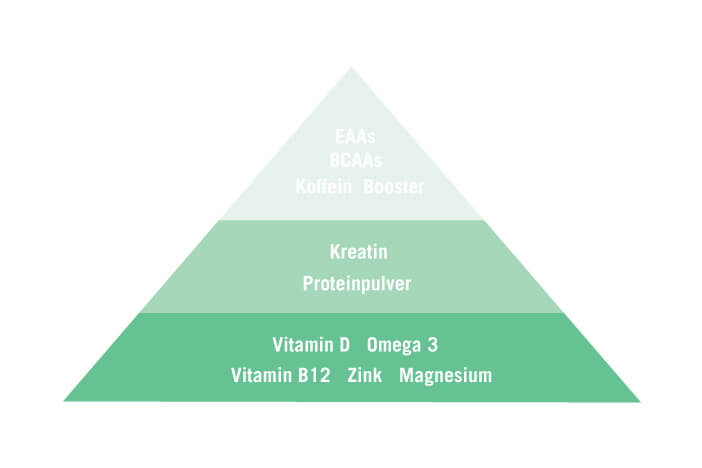Omega 3 fatty acids - For a healthy heart and brain

What are Omega 3 fatty acids?
Omega 3 fatty acids are a group of micronutrients also known as “the good fats”. Like the other micronutrients, the body cannot produce omega 3 fatty acids by itself. Therefore, we need to get them through the foods we eat. Omega 3 fatty acids are a subgroup of polyunsaturated fatty acids and are essential for vital processes in the body. The (biologically) largest role is played by EPA (eicopentaenoic acid) and DHA (docosahexaenoic acid) as well as alpha-linolenic acid (ALA). However, the latter is converted to EPA and DHA in the body. You can find out exactly what these substances are in our Omega 3 fatty acid glossary.
What do we need omega 3 fatty acids for?
Omega 3 fatty acids have several functions in our body. They are predominantly used in cell division and the formation of cell membranes. These are the “outer walls” of the cells and the omega 3 fatty acids ensure that these remain permeable and flexible, so that the exchange of fluid between the cells is maintained. This makes them indispensable for the metabolism.
Another area of application is in the heart: they lower blood pressure and are preventive for all cardiovascular diseases, as they support the blood circulation of the entire body.
Omega 3 fatty acids also play an important role for the brain, as the brain is largely made up of fat. There they have a preventive and inhibitory effect on various types of inflammation.
Types of Omega 3 fatty acids

Omega 3 fatty acids play a particularly important role in the metabolism, heart functioning and the brain. The three most active fatty acids EPA, DHA and ALA have different functions:
| Omega 3 Acid | Function / Task |
|---|---|
| ALA |
|
| DHA |
|
| EPA und DHA |
|
Omega 3 fatty acids glossary
Here you will find detailed information about the individual omega 3 fatty acids. You can find out what their tasks are and how you can get the most out of them to achieve your goal quickly:
- ALA (alpha lionene acid))
- DHA (docosahexaenoic acid)
- EPA (eicopentaenoic acid)
Do you want to learn more about nutrients? Then browse our Nutrients section and learn about the other micronutrients such as vitamins, minerals and secondary plant substances.
Omega 3 fatty acid rich nutrition
Since omega 3 fatty acids can only be ingested through food, it is very important to include the appropriate foods in your diet. Most people consume far less omega 3 fatty acids than other polyunsaturated fatty acids such as Omega 6. However, too great an imbalance between the two leads to Omega 6 blocking Omega 3.
You can easily prevent this. Here are a few tips for doing so:
- Omega 3 fatty acids are found mainly in animal products, especially fish. So non-vegetarians and vegans should include fish such as salmon, tuna, mackerel and herring in their diet.
- Plant-based sources of Omega 3 fatty acids include nuts, seeds and their oils. So try to include walnuts, chia seeds, linseeds (or their oils) in your diet.
- You can counteract the imbalance between omega 3 and omega 6 by replacing animal fats from chicken, beef, pork etc. with fish or vegetable fats from time to time.
Where can Omega 3 fatty acids be found?
Good sources of omega 3 fatty acids are oily fish such as salmon, herring and mackerel or algae. Vegetable oils such as linseed oil, walnut oil and hemp oil contain a linolenic acid, the precursor of EPA and DHA.
Supplement Omega 3 fatty acids

As described above, too great an imbalance between omega 3 and omega 6 can lead to a blockage of the omega 3 fatty acids. However, an unbalanced or inadequate diet can also quickly lead to an Omega 3 deficiency. To counteract this, you can buy appropriate supplements from any chemist. The best known are probably the “fish oil capsules”.
But be careful: an Omega 3 deficiency is difficult to diagnose so do not make rash decisions. The symptoms are inconclusive and manifest themselves as skin problems, sleeping problems, tiredness and muscle weakness. It is therefore best to consult your doctor before supplementing with additional Omega 3. Too much Omega 3 can have negative effects on your body. Since micronutrients are generally only needed in small amounts, additional supplementation with tablets or capsules can quickly lead to an overdose. A balanced diet will cover your Omega 3 fatty acid needs quickly and naturally. For more information on supplements, take a look at the free Upfit Supplement Guide.
FAQ
- First and foremost, they are used in cell division and the formation of cell membranes
- Another area of application is the heart: they lower blood pressure and are preventive for all cardiovascular diseases.
- However, omega 3 fatty acids also play a major role in the brain, as the brain consists largely of fat. There they have a preventive and inhibitory effect on all types of inflammation.
- Omega 3 fatty acids are mainly found in animal products, especially fish. So if you are not a vegetarian or vegan, you should include certain types of fish such as salmon, tuna, mackerel and herring in your diet.
- Plant-based Omega 3 fatty acids are found in nuts, seeds and their oils. So try to include walnuts, chia seeds, linseeds (oil) in your diet.
- You can counteract the imbalance between omega 3 and omega 6 by replacing animal fats from chicken, beef, pork etc. with fish or vegetable fats from time to time.
Since micronutrients are generally only needed in small amounts, supplementing with tablets or capsules can quickly lead to an overdose. A balanced diet will cover the need for Omega 3 fatty acids quickly and naturally.
Sources
Deutsche Gesellschaft für Ernährung. (2020). Nährstoffzufuhr über Supplemente. In 12. Ernährungsbericht 2012 – Kapitel 1 – Ernährungssituation in Deutschland. Zugriff am 18.06.2020 unter https://www.dge.de/wissenschaft/ernaehrungsberichte/ernaehrungsbericht-2012/kapitel-1/
Deutsche Gesellschaft für Ernährung, (2020). Referenzwerte für die Nährstoffzufuhr. Zugriff am 18.06.2020 unter https://www.dge.de/wissenschaft/referenzwerte/

